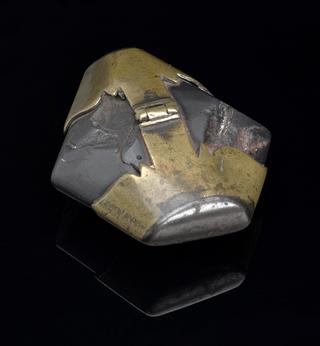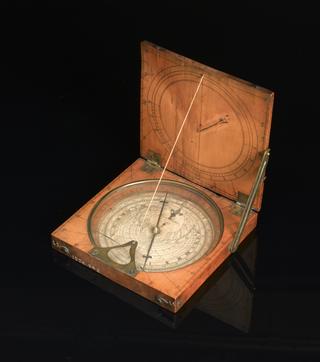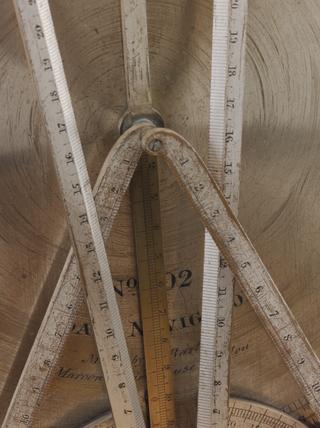Octant by an unknown English maker
Octant by an unknown English maker, about 1750. Mahogany frame, limb and index arm; brass fittings and a brass stop for the index arm; an inlaid ivory plate in the crossbar (with obliterated text). Inlaid boxwood transversal scale from 0° to 90° and vice versa every 20' (for zenith distance), measuring to 90°. The scale reads to 2' by use of the ivory-lined fiducial edge at the end of the index arm. Two socket shades (red and orange). Index-glass adjustment by screw; adjustment of both horizon glasses by screws, and levers, wing nuts, and milled clamping screws. There is no tangent screw, the clamping screw is on the back of the index arm. The sight vane has two pinholes and a swivelling shutter; the back sight vane has one pinhole. In a stepped oak box.
- Materials:
- mahogany (wood) , box (wood) , glass , brass (copper, zinc alloy) and ivory
- Object Number:
- 1912-226/1
- type:
- octant






